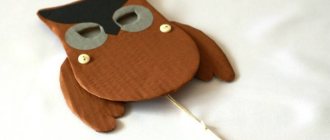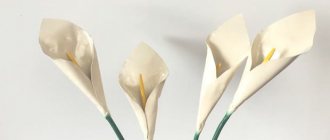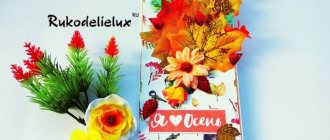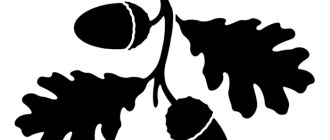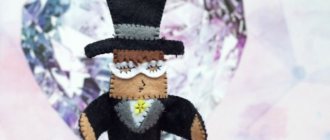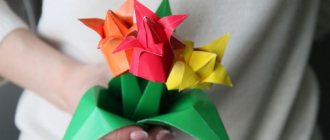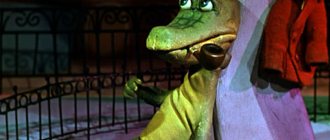Autumn leaves made from paper look very beautiful. You can make wonderful decorations from them: garlands, wall panels, wreaths, all kinds of applications. And such leaves themselves are pleasing to the eye.
Another undoubted advantage of autumn paper leaves is that they develop many useful skills in the children who make them. Children develop fine motor skills, they learn to hold scissors, a pencil, brushes and paints, and carefully handle glue. Well, and, in addition, they develop perseverance, attentiveness, they learn to understand beauty, and not only understand, but also create it with their own hands. All these wonderful skills and emotional feelings will definitely be useful to children in later life.
Let's talk in more detail about how autumn paper leaves are made.
Autumn leaves made from accordion paper
Volume leaves made of paper look especially impressive. You can use them to make bouquets and three-dimensional compositions, or they can be secured with tape or pins on wall newspapers or photo frames with autumn drawings.
Necessary materials:
- paper and stencils for blanks;
- pencil and scissors;
- glue stick or glue.
For design work where only one side will be visible, you can take single-sided colored paper from standard children's sets. If the composition is planned to be voluminous, only double-sided will do.
It is worth checking in advance whether the stem is strong enough when crushed. Glossy sheets are not suitable for such crafts.
You can invite the children to first color the A4 sheets themselves, at the same time telling them about the changes in their color in the fall and showing that in nature there are no monochromatic surfaces. To prevent the paint from being damaged when crumpled, you need to use watercolor. The paper must be completely dry before starting work.
Technique:
- In kindergarten, children trace a template along the contour on paper. Older children can easily make isosceles triangles according to the diagram on their own.
- On the cut-out workpiece, first lay the first fold of 1.5 cm, and then the rest along it “inside-out”. Each fold must be pressed tightly - strictly fixed with a pencil or ruler.
- The finished accordion is folded in half.
- From the remaining ribbon, fold a twig and pass it through the slot of a leaf folded in half.
- All that remains is to crumple the cutting and secure the central part of the product with glue.
Carved leaves are made using the same principle. The basis of this template of autumn leaves for cutting is an isosceles triangle turned into a herringbone.
Wreath of autumn paper leaves with children
The next and last craft from paper leaves that we will make is an autumn wreath. Yes, yes, wreaths are not only for Christmas. Do you think where it might be appropriate? I suggest you watch this creative MK, and ideas, I’m sure, will come by themselves.
Materials:
- Scissors;
- PVA glue;
- Colored printer paper;
- Simple pencil;
- Cardboard;
- Yellow satin ribbon 30 cm long;
- Figured hole punch “Maple leaf”.
Subsequence:
Draw a circle on a sheet of cardboard. You can use a large plate as a stencil.
Inside it we make another smaller circle.
Cut out the resulting ring.
On the reverse side we glue a loop of satin ribbon to it.
Using a figured hole punch, we cut out maple leaves from multi-colored paper.
We glue the cardboard base.
This is such a cute autumn decoration for the interior. As you can see, nothing complicated.
Let's see what other leaf wreaths you can make.
A simple but stylish option. Do you agree?
Even children can handle creating such a wreath.
Felt leaves look even more natural than paper ones.
This is how you can decorate your home on the eve of Halloween!
If you want to surprise everyone, then take something as unusual as this type of craft into your collection. I suggest making a wreath like this. It looks bright and wonderful and will decorate any room or party room.
Corrugated paper leaves
Corrugated paper is the most successful material for quickly making autumn leaves. The veins are already determined by the texture of the material itself.
During a creativity lesson at a preschool educational institution, preschool children can be asked to make an applique or collage out of them. Older children can make additional gluing to make the leaf as natural as possible - the effect will ensure multidirectional relief of the paper. In any case, templates will be required.
Making a leaf with hard veins:
- You need to cut out rhombuses from corrugated paper, then divide them into triangles. For maple you will need 10 parts.
- The parts are set aside from the center, turning the workpieces over, the veins are laid out in a herringbone pattern and glued together with an overlap of 2-3 mm.
- The maple leaf template must be applied so that the center of the gluing coincides with the axis of the veins. The outline is marked with a pencil, then the workpiece is cut out.
- Tightly rolled paper becomes a twig.
If you glue the twig carefully, the leaves will look good from all sides. They can be used to make garlands and volumetric compositions.
Prints on paper
Using the method described below, you can make individual elements, and then cut them out with scissors along the contours, or you can make an original leaf fall, as in the photo below, using multi-colored crayons and one large sheet of paper.
To create beautiful leaves from paper, you need to do some preliminary work, namely, take a walk in the autumn park and collect material from different trees. The leaves of linden, oak, and maple will look beautiful. Stock up on wax crayons or colored pencils. The leaves should be fresh with well-defined veins, since they are the main assistants in completing such a task.
Read on to learn how to make beautiful leaves out of paper. Natural material should be placed on the table surface with the back side facing up. Place a sheet of paper on top and press with your hand so as not to move the workpiece. Then, moving the pencil from left to right with quick movements, shade the entire surface of the leaf. You will get a clear print. If desired, you can later cut out the print along the contours and use it for appliqué.
Cutting templates
To work with children, templates for any equipment can be printed on a printer, and then transferred to cardboard and cut out.
The high density of the blanks for tracing will ensure their durability. Having planned lace, requiring the use of a stationery knife, autumn leaves stencils for cutting can be made from thin plastic. Otherwise, the blanks will be disposable.
How to make DIY fall crafts from leaves
If you have prepared and dried tree leaves in advance, you can begin to create beautiful and original autumn crafts. They can create a cozy atmosphere in the home or be a suitable piece for display in a school or garden.
If you don’t have enough imagination and imagination to create crafts from leaves, then you can use a selection of works and master classes.
Evaluate your child’s age and skills before you start creating your own autumn crafts from tree leaves.
Related materials for working with leaves:
Colored cardboard and paper. Cardboard usually acts as a background and basis for work. If you glue leaves onto paper, it may bend and curl due to the weight of the leaves, so it is better to use cardboard. You will need colored paper for additional decoration (to make eyes or other parts of the animal’s body).
How to glue leaves: this can be done with regular PVA glue (it glues dry leaves well), but hot glue is also perfect.
Volumetric leaves, like real ones
The naturalness of paper leaves is given by coloring. In any case, monochromatic options will look like crafts.
The paper can be tinted so that the colors do not seem rough:
- grated crayons or pencil lead;
- watercolors and blurred watercolor pencils;
- alcohol paints (for example, from a felt-tip pen) and a sponge;
- airbrush or spray drops with any stiff brush.
To make the composition beautiful and realistic, the teacher must tell you in advance which colors are characteristic of which plant and help you choose shades.
You can literally copy the texture of the leaves by simply highlighting it with chalk or a wax pencil. To do this, you need paper thin enough so that the relief of the veins can be clearly felt through it.
Having placed the original under the sheet, you need to lightly touch the surface so that the tinting lies brighter on the folds. If you choose the shade of the paper and chalk in advance, you can get a realistic effect.
The veins of the leaves, even if they are made of plain paper, should be embossed. There are simple ways to corrugate a workpiece without resorting to complex stamping methods. To make embossed veins, you will need:
- a dense but fairly soft base (folded paper sheets, linoleum, thick oilcloth);
- scissors, sharp stick, toothpick or skewer;
- visual diagram.
Having placed the workpiece on a soft surface, you need to push through the veins, observing the natural pattern of the original. The lines should not be rigid or drawn according to a ruler.
For paper-plastic techniques that make it possible to obtain voluminous blanks, scissors are usually used. A part is passed through their cutting edge at a fracture, causing it to begin to curl.
When working with children, you can also use a thin ruler - this will prevent injury. The main thing is to show with an example how pressure affects the quality of twisting.
The veins on the leaves can also be made voluminous. To do this, you will need a glue gun or 3D pens that have become quite common. The relief is simply drawn with plastic, and then painted along with the main plane.
A similar effect can be achieved with simple PVA glue, if you dry it a little in an open container. It is difficult to implement such techniques in a kindergarten, but the use of new interesting technologies will make classes with older children more interesting.
Master class on how to make accordion paper leaves
How to make accordion leaves? It seems very simple! You need to fold the paper like an accordion, then the crafts will be corrugated. But in fact, there are several options for making such sheets.
Maple
We cut out the blank according to the template.
This is how it should turn out.
We fold the workpiece like an accordion (that is, we bend the sheet up and down at the same distance, for example, after 0.5 cm).
We bend a strip of paper folded many times in the middle.
Glue the inner sides of the accordion together.
Straighten the folds of the accordion and glue the stem.
They can be so beautiful if you use paints or designer paper.
Oak Leaf.
This simple template produces an oak leaf. Folds exactly the same as maple.
Just initially fold the sheet not across, but lengthwise in half.
Ash.
It is made without cutting out a template. You just need to take a triangle with an upper angle of 90⁰. To do this, fold the square in half diagonally and cut along the fold line.
Starting from the bottom, stack the sheet with an accordion.
Fold the strip in half (long side of the accordion to the long side) and glue these sides.
Straighten.
It is better not to cut out the bends of the leaf on the finished workpiece, but first cut out these bends using a template!
If we make a triangle with a flatter angle, we will get a long, narrow willow leaf.
Here is a more round leaf, similar to a birch one.
And this is how the leaves are also rounded at the base.
But a leaf of a nut or what kind of tree?
Imagine what a beautiful bouquet you will get from multi-colored leaves of different shapes. And so that they do not fall, it is better to glue them on a skewer.
Autumn leaves using origami technique
Origami classes are included in the school curriculum. The complexity of the idea is chosen taking into account the age of the children.
For kids, you can offer modular equipment - maple or currant leaves made from modules. In this case, you will only have to fold the diamond-shaped blanks, which are then glued together into the finished composition.
Sprig of pine needles
To create carved leaves, you can also use thin strips of quilling, folding them like a large accordion. The photo below shows the step-by-step execution of such work.
First, a strip of paper is folded in half, and only then the remaining folds are made on one and the other side of the workpiece. PVA glue is applied in the center of all folds and by squeezing the side parts with your hand, a separate small branch is obtained. To create a painting, several of these elements are often made and joined together. If you need to fold a long spruce branch, then simply lengthen the workpiece by gluing one more strip to each edge.
Registration of a group in kindergarten
For large compositions, cut out and slightly tinted leaves from paper and cardboard are suitable. Large beads or berries from painted acorns can become rowan branches. A more stylish option is compositions using the quilling technique - lace patterns made from colored stripes.
The teacher will have to take on most of the work, although children can also assemble the simplest spirals into flowers using a glue stick.
Technique:
- The selected ornament must be transferred to thick paper. The main pattern is laid out along the contour using pins. In the case of leaves, these are veins.
- Ribbons folded into spirals fill the volume of the sheet. You can play with the color of the parts of the composition.
- The joints are treated with a glue stick or a brush with PVA.
After complete drying, the composition can be removed from the template.
For 2nd grade
Children of this age will be interested in creating autumn leaves on cardboard. In addition, such needlework includes two techniques at once: appliqué and drawing.
First you need to prepare the background using colored pencils, felt-tip pens or paints. The crown of a tree, fallen leaves and falling leaves can be decorated by gluing leaves of various colors and shapes; you can use them in crumbled form.
Autumn is the best time to collect a herbarium, which saves children from idleness on rainy days. Leaves are an excellent material for activities that develop creativity; in addition, they are easily accessible, one might say they fall into your hands in the fall. Even if dry leaves break, they are useful for some types of applications.
Classroom decorations with leaves
Another spectacular technique is twisted structures using the paper-plastic technique. The relief is created by inverted stripes - internal stripes. Works can be modular. In this case, diamonds of the same type need to be fastened together.
Technique:
- A stencil of autumn leaves for cutting out of paper needs to be traced. Only double-sided paper is used, otherwise the reverse side will be visible when flipped.
- The workpiece is cut along the contour, the internal parts are perforated with a paper knife.
- Thin central ribbons are turned over, making the leaf symmetrical, and secured with glue or a stapler.
All that remains is to fasten a few leaves into a composition. To avoid ruining the look, you can use double-sided tape.
Corn Leaf Crafts
Another topic of interest for creativity was not covered in the article. Crafts made from corn leaves can be very beautiful and original.
Corn leaf flower
We cut out about 20 leaves from the pointed-shaped talash, and also prepare the substrate. We also need a strip of about 5 cm.
The strip must be folded and glued to the center of the backing. Now you need to attach the cut out petals in a circle. Let's start with the smallest ones
This flower can be used to decorate a gift or create a bouquet of leaves.
Vytynanki - leaves on the windows
The vytynankas will look impressive on the windows. This is a lace cutting technique. Double-sided options will be equally impressive on both the inside and outside of the window. The technique is only suitable for children who can confidently handle a paper knife.
Cutting should not be offered to children due to the risk of injury. You can offer ready-made schemes for implementation. Older children can come up with an ornament on their own. The design is first drawn on cardboard and cut out, then the blank is used to transfer the design to the main color.
Beautiful DIY crafts from leaves
Autumn girl: craft from leaves
Girls from an early age love to dress their dolls. Why not create an outfit for Barbie made from leaves. The result will be an original autumn craft.
Choose for her the most beautiful leaves collected during your walk.
We will need:
- Doll
- Leaves
- Glue
- Cardboard
1. Dry the leaves with an iron using paper
2. Make a cone out of cardboard that will act as a skirt.
3. Attach the cone to the doll by cutting off the top
4. PVA must be diluted with water 1:1
5. Glue the leaves onto the cone with diluted glue, starting from the bottom.
6. Don't forget about a hat for a fashionista
7. The bottom of the dress can be decorated with rose petals
In a similar way, you can make an applique by first drawing a girl on cardboard, but make the outfit from leaves
Leaves for dress design
In kindergartens and elementary schools, fashion shows with the simplest elements, including those made of paper, are practiced. For middle classes, such ideas are no longer relevant; they only make teenagers laugh. They can be offered to make crafts from foamiran - dense textiles that hold their shape.
Parents should be warned in advance about becoming familiar with this technology, as investments will be required. To work you need:
- foamiran itself (primary colors can be purchased one sheet per class);
- molds or molds (leaves, petals);
- tongs or iron for heating;
- paints for creating shades and a sponge for coloring;
- beads, sparkles, glue for attaching parts.
The investment will be worth it. This design, unlike paper, will withstand any presentation - after heating, the material holds its shape even when crumpled. Volumetric items can be worn on ordinary days - the fashion for hand-made items is only growing.
There are dozens of original techniques for making autumn leaves. Depending on the age of the children and the final idea, the lesson can be carried out step by step, showing the children the techniques sequentially, or leaving most of the work for independent creativity. In the second case, you need to introduce ideas as a whole, choosing feasible options.
Crafts from leaves for 3rd grade
In autumn it is impossible to remain indifferent to the beauty of nature and it is very important to teach children to rejoice and enjoy what it gives us.
Therefore, the topic of autumn crafts for elementary school has been relevant for many years and is unlikely to lose its popularity for many years to come.
There are many options for fall-themed crafts for school.
Applications that look like real paintings
You can get creative with your child and create a beautiful house from leaves and other natural materials, using a cardboard frame as a basis.
By combining a child’s ability to draw and appliqué, real masterpieces can be created.



